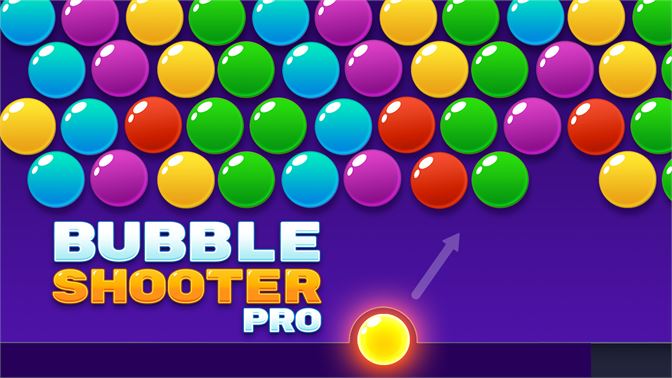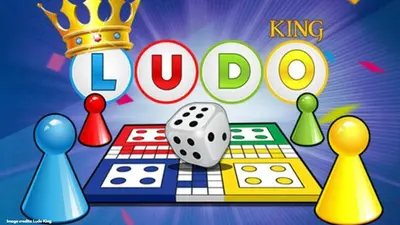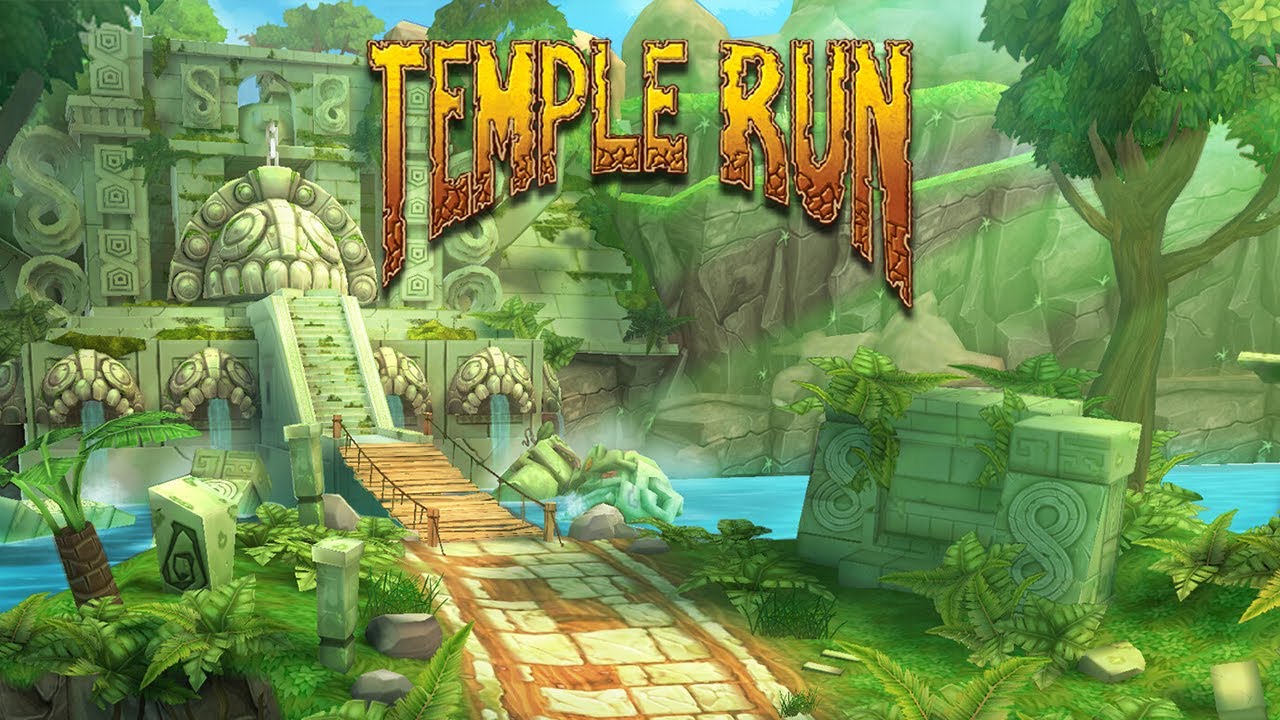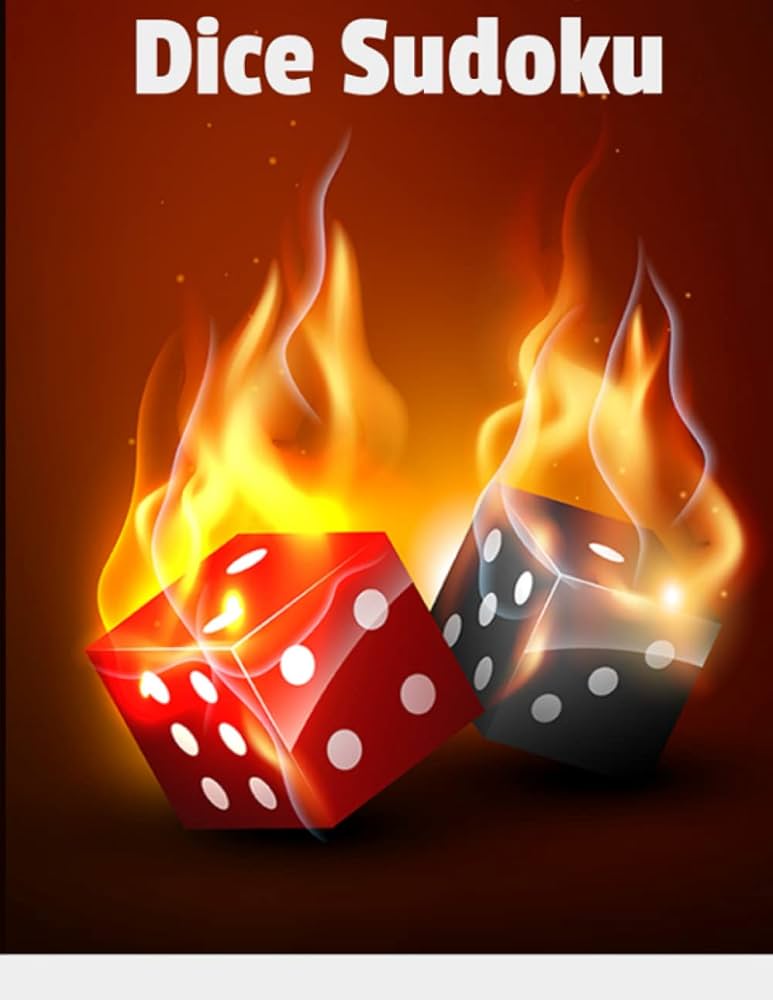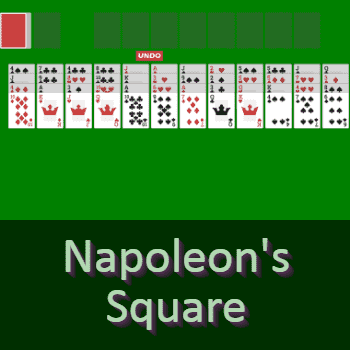Ludo King: Reviving a Classic Board Game for the Digital Age In the realm of mobile gaming, few titles have achieved the widespread appeal and enduring popularity of “Ludo King.” Combining the charm of a classic board game with the convenience of modern technology, Ludo King has become a staple in the digital gaming world. Since its launch in 2016, the game has brought the traditional family game of Ludo into the 21st century, captivating players across the globe. This article delves into the origins of Ludo King, its gameplay mechanics, its impact on the gaming community, and its role in bridging generations through digital entertainment. The Roots of Ludo: Ludo, a board game that traces its origins back to ancient India, is a simplified version of the traditional game Pachisi. Known for its straightforward rules and reliance on luck and strategy, Ludo has been enjoyed by generations of players. The game’s simplicity and appeal have made it a beloved pastime in many cultures. Ludo King brings this classic game into the digital age, preserving its essential elements while adding new dimensions to the gameplay. Developed by Gametion Technologies, the app has successfully translated the essence of the traditional board game into a mobile-friendly format. Gameplay Mechanics: Ludo King stays true to the classic rules of Ludo, making it instantly recognizable to fans of the board game. Players compete to move their four tokens from the starting position to the home area based on dice rolls. The objective is to be the first to get all four tokens safely to the center of the board, while strategically blocking and capturing opponents’ tokens. The digital adaptation of Ludo King maintains the core mechanics but enhances the experience with several modern features: Multiplayer Options: Players can engage in online multiplayer games, challenging friends and players from around the world. The game also offers offline modes, allowing players to compete against AI or with family and friends on a single device. User Interface: The game features a clean and intuitive interface, making it easy for both new and experienced players to navigate. The digital board is colorful and engaging, with animations that bring the game to life. Customizable Settings: Ludo King allows players to customize game settings, including the ability to choose different board themes and token designs. This personalization adds a layer of enjoyment and allows players to tailor the game to their preferences. Dice Roll Mechanics: The digital dice rolls are randomized, ensuring fairness and excitement in every game. This feature maintains the element of chance that is central to the original Ludo experience. Impact on the Gaming Community: Ludo King has achieved significant success, becoming one of the most downloaded board game apps on various platforms. Its popularity can be attributed to several factors: Nostalgia and Familiarity: For many players, Ludo King evokes fond memories of playing the board game with family and friends. The digital version allows players to relive these experiences in a modern, accessible format. Accessibility: The game’s availability on multiple platforms, including Android, iOS, and Windows, ensures that it reaches a wide audience. Its free-to-play model with optional in-app purchases makes it accessible to players of all economic backgrounds. Social Connectivity: By offering online multiplayer features, Ludo King has created a platform for social interaction. Players can connect with friends, join global tournaments, and participate in community events, fostering a sense of connection and camaraderie. Educational Value: Ludo King also serves as an educational tool, teaching players strategic thinking, turn-taking, and basic arithmetic. Its simplicity makes it an ideal game for children, while its strategic elements appeal to players of all ages. Legacy and Future: Ludo King’s success highlights the potential for classic games to find new life in the digital era. The game’s ability to maintain the essence of Ludo while integrating modern features demonstrates how traditional pastimes can evolve with technology. As mobile gaming continues to advance, Ludo King’s blend of nostalgia and innovation positions it as a key player in the board game genre. The game’s developers have continued to support and update the app, introducing new features and enhancements to keep the experience fresh and engaging. Conclusion: Ludo King stands as a testament to the enduring appeal of classic board games and the power of digital technology to breathe new life into traditional pastimes. By bringing the timeless game of Ludo to a global audience in a modern format, Ludo King has successfully bridged the gap between generations, offering a fun and accessible way to experience a beloved game. As it continues to thrive in the mobile gaming landscape, Ludo King remains a shining example of how classic games can be reinvented for the digital age.
The Enduring Appeal of Temple Run: A Modern Classic in Mobile Gaming
The Enduring Appeal of Temple Run: A Modern Classic in Mobile Gaming In the ever-evolving world of mobile gaming, certain titles manage to break through the clutter and become cultural phenomena. One such game is “Temple Run,” a title that has captivated millions with its simple yet addictive gameplay. Since its release in 2011, Temple Run has not only influenced countless other games but has also secured its place in the annals of mobile gaming history. This article explores the game’s origin, gameplay mechanics, and its lasting impact on the industry. The Birth of Temple Run Temple Run was developed by Imangi Studios, a small team founded by husband-and-wife duo Keith Shepherd and Natalia Luckyanova. The game was released in August 2011 and quickly rose to prominence, garnering critical acclaim and commercial success. Its innovative gameplay and accessible design set it apart from other games available at the time. Gameplay Mechanics At its core, Temple Run is an endless runner game. Players control an adventurer who has stolen a cursed idol from a temple and must escape from demonic monkeys that are in hot pursuit. The game’s appeal lies in its straightforward mechanics and fast-paced action. The player navigates the character by swiping and tilting their device to avoid obstacles, collect coins, and make sharp turns. The environment is procedurally generated, meaning it changes with each run, ensuring that no two experiences are identical. This randomness adds to the game’s replayability, as players strive to beat their high scores and achieve new milestones. The controls are intuitive—swiping left or right turns the character, swiping up makes them jump, and swiping down makes them slide. This simplicity makes Temple Run accessible to players of all ages and skill levels, contributing to its broad appeal. Visual and Audio Design Temple Run’s visual style is distinctively vibrant and cartoonish, featuring lush jungle environments and ancient temple ruins. The graphics, while not hyper-realistic, are designed to be eye-catching and engaging, with a strong emphasis on color and movement. The game’s audio design further enhances the immersive experience. The soundtrack features an upbeat, adventurous score that complements the game’s fast pace, while the sound effects—such as the growls of pursuing monkeys and the clinking of collected coins—add an extra layer of excitement. The Impact on Mobile Gaming Temple Run’s success had a profound impact on the mobile gaming landscape. Its popularity helped cement the endless runner genre as a staple of mobile gaming, inspiring numerous clones and similar games. Titles like “Subway Surfers” and “Jetpack Joyride” owe a debt to Temple Run’s pioneering gameplay. Moreover, Temple Run demonstrated the potential of mobile games to achieve mainstream success. Its easy-to-understand mechanics and addictive nature proved that mobile gaming could be more than just a casual pastime; it could be a serious competitor to traditional console and PC gaming. Sequels and Spin-offs Following the success of the original Temple Run, Imangi Studios released several sequels and spin-offs. Temple Run 2, launched in 2013, built upon the original’s foundation with enhanced graphics, new environments, and additional features like new power-ups and characters. Temple Run: Brave and Temple Run: Oz, both tie-ins to popular movies, offered unique twists on the original formula, incorporating themes and elements from their respective franchises. These sequels and spin-offs helped to sustain interest in the series and introduced new mechanics and settings that kept the gameplay fresh. Cultural Impact and Legacy Temple Run’s influence extends beyond its gameplay and industry impact. The game has become a cultural touchstone, referenced and parodied in various forms of media. Its success also highlighted the potential for small indie studios to achieve global recognition, inspiring countless developers to create their own mobile games. The game’s legacy is also evident in its continued presence in the mobile gaming market. Even years after its initial release, Temple Run remains a popular choice for casual gamers looking for a quick and engaging experience. Conclusion Temple Run stands as a testament to the power of innovative design and the potential of mobile gaming. Its simple yet addictive gameplay, combined with its lasting influence on the genre, has cemented its place as a modern classic. As mobile gaming continues to evolve, Temple Run’s legacy serves as a reminder of the joy that can be found in the perfect combination of accessibility and excitement.
Dice Sudoku: A Fresh Twist on a Classic Puzzle
Dice Sudoku: A Fresh Twist on a Classic Puzzle In the world of puzzles, where traditional formats are often reinvented with new mechanics, “Dice Sudoku” offers a refreshing and engaging twist on the classic Sudoku game. Released in 2023, Dice Sudoku has quickly gained popularity for its innovative use of dice and its ability to blend luck with logic. This article explores the unique features of Dice Sudoku, its gameplay mechanics, and why it has captured the attention of puzzle enthusiasts. The Concept Behind Dice Sudoku Dice Sudoku is a novel variation of the traditional Sudoku puzzle, incorporating dice as a central element of the gameplay. While maintaining the core principles of Sudoku—filling a grid with numbers so that each column, row, and region contains unique values—Dice Sudoku introduces a dynamic element of chance and strategy by using dice to determine the numbers. This fusion of familiar Sudoku rules with the randomness of dice results in an intriguing and accessible puzzle experience. Gameplay Mechanics Setup and Components: The game of Dice Sudoku typically includes a Sudoku grid and a set of dice, each die featuring different numbers or symbols. The grid is often the same 9×9 format found in classic Sudoku puzzles, divided into nine 3×3 subgrids. The dice are used to introduce variability and challenge into the puzzle-solving process. Objective: The primary objective in Dice Sudoku is to fill the grid with numbers according to the standard Sudoku rules: each number must appear exactly once in each row, column, and 3×3 subgrid. The twist is that players use the dice to generate the numbers that will be placed in the grid, adding an element of chance to the puzzle-solving process. Turn Structure: In Dice Sudoku, players typically roll the dice at the start of the game to determine the numbers available for placement. They then strategically place the numbers in the grid, ensuring that they adhere to the Sudoku rules. The game may involve rolling the dice multiple times or using different dice rolls to introduce variability and complexity. Scoring and Progression: Dice Sudoku does not usually involve traditional scoring. Instead, players focus on solving the puzzle by correctly filling the grid according to Sudoku rules. Some versions of the game might include time challenges or additional rules to introduce competitive elements, but the primary goal remains to complete the grid accurately. Special Features: Dice Sudoku often features various special elements that enhance the gameplay experience. These may include different types of dice with unique symbols, variations in grid sizes, or additional rules that modify the traditional Sudoku mechanics. The game might also offer multiple levels of difficulty, allowing players to choose a challenge that matches their skill level. Visuals and Design Dice Sudoku is typically designed with a clear and visually appealing layout. The game’s grid and dice are often rendered in a way that is easy to read and interact with. The dice may feature bright colors or distinct symbols to differentiate between numbers, while the Sudoku grid is designed to be straightforward and user-friendly. The visual design is complemented by an intuitive interface that makes it easy for players to roll the dice, place numbers, and track their progress. The game’s presentation emphasizes clarity and accessibility, ensuring that players can focus on the puzzle-solving aspect without distraction. Appeal and Community The appeal of Dice Sudoku lies in its innovative blend of chance and strategy. By incorporating dice into the classic Sudoku format, the game introduces a fresh dynamic that appeals to both Sudoku enthusiasts and those looking for a new puzzle challenge. The element of luck adds an unpredictable and exciting twist to the traditional logic-based puzzle. The Dice Sudoku community is enthusiastic and growing, with players sharing strategies, discussing variations, and exploring different ways to enjoy the game. Online forums and social media platforms serve as spaces for players to connect, exchange tips, and participate in community-driven events. Future Prospects and Updates Given the positive reception of Dice Sudoku, future updates and expansions are likely. These may include new dice designs, additional grid sizes, and enhanced gameplay features. Developers may also introduce new variations of the game to keep the experience fresh and engaging for players. Conclusion: Dice Sudoku offers a creative and engaging twist on the classic Sudoku puzzle, combining the familiar logic-based challenge with the unpredictable element of dice rolls. Its innovative gameplay, clear design, and blend of chance and strategy make it a standout title in the puzzle genre. Whether you’re a Sudoku aficionado or a newcomer looking for a new puzzle experience, Dice Sudoku provides a delightful and refreshing way to test your puzzle-solving skills. With its unique approach and growing community, Dice Sudoku is poised to continue captivating players and offering a new dimension to the world of puzzles.
Galaxy War: A Thrilling Space Strategy Experience
PLAY Galaxy War: A Thrilling Space Strategy Experience In the ever-expanding universe of strategy games, “Galaxy War” has emerged as a standout title that combines tactical depth with an epic space-faring narrative. Released in 2024, Galaxy War has captivated gamers with its intricate gameplay, immersive universe, and strategic challenges. This article explores the key features of Galaxy War, its gameplay mechanics, and why it has become a favorite among fans of space strategy games. The Concept of Galaxy War: Galaxy War thrusts players into a sprawling galactic conflict where they must command fleets, forge alliances, and strategize to dominate the cosmos. Set against the backdrop of an expansive universe filled with star systems, alien civilizations, and interstellar phenomena, the game challenges players to navigate complex political landscapes and engage in strategic warfare. Gameplay Mechanics: Setup and Components: Galaxy War features a richly detailed game board representing a galaxy map, divided into various star systems and regions. Players start by establishing their bases, recruiting fleets, and exploring nearby systems. The game may include various components such as starship tokens, resource cards, and technology upgrades. Objective: The primary objective in Galaxy War is to achieve galactic dominance through strategic military and diplomatic maneuvers. Players may pursue different victory conditions, such as controlling key star systems, accumulating resources, or achieving specific technological advancements. The game’s objectives can vary depending on the chosen scenario or campaign. Turn Structure: Each turn in Galaxy War involves a series of strategic decisions. Players manage their resources, deploy fleets, conduct research, and engage in diplomacy or combat. The turn structure is designed to balance planning and execution, allowing players to adapt their strategies based on the evolving game state. Combat and Strategy: Combat in Galaxy War is tactical and multi-faceted. Players engage in space battles using their fleets, where positioning, ship types, and tactical decisions play a crucial role. The game often features a combat system that incorporates factors such as ship stats, tactical advantages, and special abilities, making each battle a unique challenge. Diplomacy and Alliances: Diplomacy is a significant aspect of Galaxy War, allowing players to form alliances, negotiate treaties, and manage relationships with other factions. The game’s diplomatic system adds a layer of complexity, requiring players to navigate alliances, rivalries, and political maneuvering to achieve their goals. Technology and Development: Technological advancement is key to success in Galaxy War. Players can research and develop new technologies, upgrade their fleets, and enhance their capabilities. The game features a technology tree that provides various paths for advancement, allowing players to tailor their strategy based on their chosen research focus. Visuals and Design: Galaxy War is known for its stunning visual design, which brings the vastness of space and the intricacies of galactic warfare to life. The game features detailed star maps, beautifully rendered starships, and dynamic space environments. The visual elements are complemented by an atmospheric soundtrack that enhances the immersive experience. The game’s interface is designed for clarity and ease of use, with intuitive controls and informative displays that help players manage their fleets, resources, and diplomatic relations. The attention to detail in the visuals and design contributes to the game’s overall appeal and immersion. Appeal and Community: The appeal of Galaxy War lies in its combination of strategic depth and immersive space exploration. The game attracts players who enjoy complex strategic challenges, tactical combat, and the intricacies of galactic diplomacy. Its rich universe and varied gameplay mechanics provide a rewarding experience for both casual and dedicated strategy gamers. The Galaxy War community is vibrant and engaged, with players sharing strategies, discussing tactics, and exploring the game’s lore. Online forums and social media platforms serve as hubs for discussions, fan creations, and community events. The game’s active community adds to its replayability and ongoing appeal. Future Prospects and Updates: As with many successful strategy games, Galaxy War is likely to see continued support through updates and expansions. Future content may include new star systems, additional factions, and expanded campaign scenarios. The developers’ commitment to enhancing the game and engaging with the community suggests that Galaxy War will continue to evolve and provide new experiences for players. Conclusion: Galaxy War stands out as a compelling and immersive space strategy game that combines tactical depth, strategic gameplay, and a richly detailed universe. Its blend of combat, diplomacy, and technological advancement offers a rewarding experience for players who enjoy complex and engaging strategy games. With its stunning visuals, dynamic gameplay, and active community, Galaxy War is a testament to the enduring appeal of well-crafted space strategy games. Whether commanding fleets, forging alliances, or exploring the galaxy, players are sure to find an epic and thrilling adventure in this cosmic conflict.
Jewelcraft: A Brilliant Blend of Puzzle Solving and Strategy
PLAY Jewelcraft: A Brilliant Blend of Puzzle Solving and Strategy In the crowded arena of puzzle games, “Jewelcraft” shines brightly as a captivating title that combines the thrill of match-3 mechanics with strategic depth. Released in 2023, Jewelcraft has garnered attention for its engaging gameplay, stunning visuals, and innovative features. This article delves into the essence of Jewelcraft, exploring its gameplay mechanics, appeal, and what makes it a standout game in the puzzle genre. The Concept Behind Jewelcraft: Jewelcraft is a match-3 puzzle game where players immerse themselves in a world of dazzling gems and ancient artifacts. The game challenges players to swap and match colorful jewels to complete objectives, solve puzzles, and advance through increasingly complex levels. With its combination of strategic gameplay and visually appealing design, Jewelcraft offers a refreshing twist on the classic match-3 formula. Gameplay Mechanics: Setup and Components: Jewelcraft features a vibrant game board filled with various types of gemstones and jewels. The board is usually a grid layout where players must match three or more identical gems to clear them from the board. The game may also include special tiles, power-ups, and obstacles that add complexity and excitement to the gameplay. Objective: The primary objective in Jewelcraft is to complete specific goals for each level. These goals can vary and may include clearing a certain number of jewels, reaching a target score, or collecting special artifacts. The game often includes a series of levels, each with unique challenges and requirements. Turn Structure: Players take turns swapping adjacent jewels to create matches of three or more. When a match is made, the matching jewels disappear, and new ones fall into place. The game features various special jewels and power-ups that can be activated to create larger matches, clear obstacles, or achieve level objectives more efficiently. Scoring and Progression: Scoring in Jewelcraft is based on the number of matches made, the use of special power-ups, and the completion of level objectives. Players earn points for each match and can achieve higher scores by creating chain reactions or using special abilities. Progression through the game involves completing levels, unlocking new areas, and facing increasingly challenging puzzles. Special Features: Jewelcraft includes several special features that enhance the gameplay experience. These may include unique jewel types with special effects, challenging obstacles that require strategic planning, and powerful boosters that help players overcome difficult levels. The game may also feature daily challenges, events, or leaderboards to keep players engaged. Visuals and Design: Jewelcraft is renowned for its visually stunning design. The game features bright, colorful graphics that bring the world of gems and jewels to life. Each jewel is intricately designed, and the game board is often adorned with beautiful backgrounds and animations that add to the immersive experience. The user interface is clean and intuitive, making it easy for players to navigate and enjoy the game. The visual effects, such as explosions and cascading jewels, are designed to be visually satisfying and enhance the overall gameplay experience. Appeal and Community: The appeal of Jewelcraft lies in its combination of familiar match-3 mechanics with innovative features and strategic depth. The game caters to both casual players looking for a relaxing puzzle experience and more dedicated players seeking a challenging and engaging gameplay experience. The Jewelcraft community is active and enthusiastic, with players sharing tips, strategies, and high scores. Online forums and social media platforms serve as hubs for discussions, allowing players to connect and exchange ideas. The game’s community-driven events and competitions also contribute to its ongoing popularity. Future Prospects and Updates: Given the success of Jewelcraft, future updates and expansions are likely to introduce new features, levels, and challenges. Developers may continue to enhance the game with additional content, special events, and gameplay improvements. The commitment to ongoing support and community engagement suggests that Jewelcraft will continue to evolve and provide fresh experiences for players. Conclusion: Jewelcraft offers a dazzling and engaging experience that combines classic match-3 gameplay with innovative features and strategic elements. Its visually stunning design, diverse gameplay mechanics, and active community make it a standout title in the puzzle game genre. Whether you’re matching colorful gems, solving intricate puzzles, or competing for high scores, Jewelcraft provides a rewarding and enjoyable gaming experience. With its blend of strategy and visual appeal, it stands as a testament to the enduring charm of well-crafted puzzle games.
Napoleon’s Square: Strategic Depth in a Classic Puzzle Game
Napoleon’s Square: Strategic Depth in a Classic Puzzle Game In the landscape of strategy and puzzle games, “Napoleon’s Square” stands out as a compelling and intellectually stimulating title that combines historical intrigue with strategic depth. Released in 2024, Napoleon’s Square has quickly captured the interest of gamers who appreciate a blend of tactical challenge and historical context. This article explores the mechanics, appeal, and unique aspects of Napoleon’s Square, providing a comprehensive overview of what makes this game an engaging experience. The Concept Behind Napoleon’s Square: Napoleon’s Square is a strategy puzzle game inspired by historical themes and tactical warfare. The game is set against the backdrop of Napoleonic-era Europe, where players are tasked with maneuvering pieces on a grid-based board to achieve strategic objectives. The game cleverly integrates historical elements with tactical gameplay, offering players a unique challenge that blends history with strategic puzzle-solving. Gameplay Mechanics: Setup and Components: The game is played on a grid-based board that represents a strategic battlefield. Players use various game pieces or tokens, each representing different military units, terrain features, or historical figures from the Napoleonic era. The board and pieces are designed with historical accuracy in mind, adding an extra layer of immersion to the gameplay. Objective: The primary goal in Napoleon’s Square is to achieve specific tactical objectives based on the game scenario. These objectives may include capturing key positions, outmaneuvering opponents, or completing historical missions. The game is typically structured around a series of scenarios or missions that provide players with different goals and challenges. Turn Structure: Each turn, players strategically move their pieces on the grid-based board, making decisions about positioning, attacking, and defending. The movement and interaction of pieces are governed by specific rules that reflect the tactical considerations of the Napoleonic era. Players must plan their moves carefully and anticipate their opponents’ actions to gain the upper hand. Scoring and Winning: Victory conditions in Napoleon’s Square depend on the objectives of the specific scenario being played. Players earn points or achieve victory by successfully completing their objectives, whether that involves capturing strategic locations, achieving tactical superiority, or fulfilling historical missions. Some scenarios may also include secondary objectives or conditions that affect scoring. Special Features: Napoleon’s Square includes several special features that enhance the gameplay experience. These may include unique abilities for different military units, historical events that impact the game, or special terrain types that influence tactics. These features add depth and variety to the game, making each scenario unique and challenging. Visuals and Design: Napoleon’s Square is noted for its visually appealing and historically accurate design. The game board and pieces are meticulously crafted to reflect the aesthetics of the Napoleonic era, with detailed illustrations and period-appropriate designs. The historical accuracy of the game’s visuals adds to the immersion, making players feel like they are part of a strategic battle from the past. The design also emphasizes clarity and functionality, ensuring that players can easily understand the game’s mechanics and track their progress. The visual elements are combined with a thematic soundtrack that enhances the historical atmosphere and complements the strategic gameplay. Appeal and Community: The appeal of Napoleon’s Square lies in its combination of historical context and strategic gameplay. The game attracts players who enjoy both tactical challenges and historical themes, offering a rich and engaging experience that appeals to fans of strategy and puzzle games alike. The integration of historical elements adds depth and authenticity, making the game more immersive and interesting. The Napoleon’s Square community is active and enthusiastic, with players discussing strategies, sharing tips, and exploring different scenarios. Online forums and social media platforms provide spaces for players to connect, exchange ideas, and delve deeper into the historical aspects of the game. The community’s engagement adds to the game’s replayability and ongoing appeal. Future Prospects and Updates: Given the success and positive reception of Napoleon’s Square, future updates and expansions are likely. These may include new scenarios, additional game pieces, and expanded historical content. The developers’ commitment to enhancing the game and engaging with the player community suggests that there will be continued support and exciting developments in the future. Conclusion: Napoleon’s Square offers a unique and engaging experience that combines historical themes with strategic puzzle gameplay. Its detailed visuals, immersive design, and tactical depth make it a standout title in the world of strategy games. Whether you’re maneuvering military units across a historical battlefield or completing intricate missions, Napoleon’s Square provides a rewarding and intellectually stimulating challenge. With its blend of history and strategy, it stands as a testament to the enduring appeal of well-crafted, thought-provoking games.
Path of the Lost: An Epic Journey Through a Mystical World
PLAY Path of the Lost: An Epic Journey Through a Mystical World In the world of adventure and exploration games, “Path of the Lost” emerges as a standout title that captivates players with its rich storytelling, intricate world-building, and engaging gameplay mechanics. Launched in 2023, this game has quickly garnered attention for its unique blend of fantasy and adventure, offering players an immersive experience that blends exploration with deep narrative elements. In this article, we’ll explore what makes Path of the Lost a memorable game, its key features, and why it has become a favorite among gamers. The Premise of Path of the Lost: Path of the Lost invites players into a beautifully crafted fantasy world where they embark on an epic quest to uncover the secrets of a mystical realm. The game’s narrative centers around the journey of a protagonist who is drawn into a quest to find a lost civilization and unravel the mysteries surrounding its disappearance. Set in a sprawling open world filled with ancient ruins, enchanted forests, and hidden dungeons, the game offers a rich tapestry of environments and lore. Gameplay Mechanics: Exploration and World-Building: At the heart of Path of the Lost is its expansive open world, which players can explore freely. The game features diverse environments, from lush forests and towering mountains to eerie ruins and bustling cities. Exploration is encouraged, with hidden secrets, collectible items, and side quests scattered throughout the world. Questing and Narrative: The game’s narrative is a key component, driving the player’s journey through a series of well-crafted quests and story arcs. Players encounter a variety of characters, each with their own backstories and motivations, and engage in dialogue choices that can influence the direction of the story. The main questline is complemented by numerous side quests that provide additional depth and context to the game’s world. Combat and Skills: Combat in Path of the Lost is dynamic and skill-based, with players engaging in real-time battles against a range of enemies, from mythical beasts to rival factions. The game offers a variety of combat styles and abilities, allowing players to customize their approach. Skill progression and character development are integral, with players earning experience points and unlocking new abilities as they advance. Crafting and Customization: Crafting plays a significant role in the game, allowing players to gather resources and create items, weapons, and equipment. Customization options extend beyond crafting, including character appearance, gear, and skill builds. This level of personalization enhances the gaming experience, allowing players to tailor their journey to their preferences. Puzzle-Solving and Exploration: In addition to combat and narrative, Path of the Lost features a variety of puzzles and challenges. These can range from solving ancient riddles and navigating treacherous terrain to deciphering cryptic symbols and unlocking hidden areas. The puzzles add an extra layer of engagement, encouraging players to think critically and explore thoroughly. Visuals and Sound Design: Path of the Lost is renowned for its stunning visuals and atmospheric design. The game employs a visually rich art style, combining detailed textures and vibrant colors to bring its fantasy world to life. Each environment is meticulously crafted, creating a sense of immersion and wonder. The sound design complements the visuals with an evocative soundtrack that enhances the game’s atmosphere. The music ranges from hauntingly beautiful melodies to intense battle themes, and the sound effects contribute to the overall immersion, whether through the rustling of leaves, the clash of weapons, or the ambient noises of the environment. Appeal and Community: The appeal of Path of the Lost lies in its blend of exploration, storytelling, and immersive gameplay. The game appeals to fans of fantasy and adventure genres, offering a captivating world filled with mystery and wonder. Its engaging narrative and expansive open world provide a rewarding experience for players who enjoy both epic quests and detailed exploration. The game has fostered a vibrant community of players who share their experiences, strategies, and fan creations. Online forums and social media platforms are abuzz with discussions about the game’s lore, hidden secrets, and tips for navigating its challenges. The community’s enthusiasm adds to the game’s longevity and replayability. Future Prospects and Updates: As with many successful games, Path of the Lost is likely to see continued support through updates and expansions. Future content may include new storylines, additional regions to explore, and further gameplay enhancements. The developers’ commitment to expanding the game’s universe and engaging with the player community suggests that there will be plenty of exciting developments on the horizon. Conclusion: Path of the Lost offers a rich and immersive adventure that captivates players with its compelling narrative, expansive world, and engaging gameplay mechanics. Its combination of exploration, combat, and puzzle-solving creates a dynamic and rewarding experience, appealing to fans of fantasy and adventure alike. With its stunning visuals, evocative sound design, and vibrant community, Path of the Lost stands as a testament to the enduring appeal of epic storytelling and immersive gameplay. Whether you’re uncovering ancient secrets or battling mythical foes, this game promises an unforgettable journey through a mystical world.
Push & Pull: Unraveling the Dynamics of a Strategic Game
Push & Pull: Unraveling the Dynamics of a Strategic Game In the realm of strategic board games, “Push & Pull” has emerged as a captivating blend of tactical maneuvering and interactive gameplay. This game combines simple rules with deep strategy, making it a favorite among gamers who enjoy a mix of competitive and cooperative play. Whether you’re a seasoned strategist or new to the genre, Push & Pull offers an engaging and intellectually stimulating experience. This article delves into the mechanics, appeal, and variations of Push & Pull, providing a comprehensive overview of this intriguing game. The Concept of Push & Pull: Push & Pull is a strategy board game that revolves around the fundamental mechanics of pushing and pulling game pieces to achieve specific objectives. The game is designed to challenge players’ spatial reasoning, planning, and adaptability, offering a fresh take on strategic gameplay. Gameplay Mechanics: Setup and Components: The game typically features a board with a grid layout, along with various pieces or tokens that players will push and pull during the game. These pieces might include player tokens, obstacles, and goal markers. The board can vary in size and design depending on the version of the game, but it generally consists of a series of squares or hexagons arranged in a grid. Objective: The primary goal in Push & Pull is to strategically maneuver your pieces to achieve specific objectives. These objectives could involve reaching designated areas on the board, aligning pieces in a particular configuration, or achieving certain positional advantages. The exact objectives may vary based on the scenario or game variant being played. Turn Structure: Players take turns executing moves by either pushing or pulling their pieces or those of their opponents. The mechanics of pushing and pulling are central to the game, requiring players to carefully consider their actions and anticipate their opponents’ moves. The game may include various types of moves, such as single-step movements, multi-step sequences, or combinations of pushes and pulls. Scoring and Winning: Victory conditions in Push & Pull depend on the specific objectives set for the game. Players earn points or achieve victory by successfully completing their objectives while navigating the challenges posed by the game’s mechanics and their opponents’ strategies. The game may also include different scoring systems or win conditions based on the variant being played. Visuals and Design: Push & Pull is often visually appealing, with a clean and well-organized board layout that highlights the strategic elements of the game. The design emphasizes clarity and functionality, ensuring that players can easily track their pieces and plan their moves. The game pieces are typically well-crafted and easy to handle, contributing to a satisfying tactile experience. Appeal and Community: The appeal of Push & Pull lies in its combination of strategic depth and accessibility. The game’s rules are relatively simple to learn, making it suitable for players of all ages and experience levels. At the same time, the strategic elements provide a rich and engaging experience for more seasoned gamers. Push & Pull fosters a competitive yet friendly atmosphere, encouraging players to think critically and adapt their strategies based on their opponents’ moves. The game is ideal for both casual game nights and serious strategy sessions, offering a versatile and enjoyable experience. Variations and Expansions: To keep the gameplay fresh and exciting, various expansions and variations of Push & Pull are available. These might include new board layouts, additional game pieces, or alternative rules that introduce new challenges and strategies. Expansions can enhance the game by adding new dimensions to the gameplay or by offering different scenarios and objectives. Conclusion: Push & Pull stands out as a dynamic and engaging strategy game that combines simple mechanics with deep strategic elements. Its emphasis on maneuvering and tactical planning makes it a compelling choice for players seeking a thoughtful and interactive experience. Whether you’re navigating the board to achieve specific objectives or outmaneuvering your opponents, Push & Pull offers a rewarding and enjoyable challenge. With its versatile gameplay and appealing design, it’s a game that invites players to explore their strategic potential and have fun in the process.
Unwrapping the Fun: A Guide to the Game of Sandwiches
play Unwrapping the Fun: A Guide to the Game of Sandwiches In the diverse and imaginative world of board and card games, the “Game of Sandwiches” stands out as a delightful blend of strategy, creativity, and culinary fun. Not to be confused with actual sandwich-making, this game revolves around the playful and strategic creation of sandwiches in a competitive or cooperative setting. With its engaging mechanics and unique theme, the Game of Sandwiches offers a fresh take on the gaming experience. Here’s an exploration of what makes this game so appealing. The Concept Behind the Game of Sandwiches: The Game of Sandwiches is a family-friendly game that combines elements of strategy and creativity with a fun, food-themed twist. Players are tasked with building the most delicious and visually appealing sandwiches using various ingredient cards. The game’s objective is to create the best sandwiches according to specific criteria or challenges, earning points based on creativity, completeness, and adherence to given themes or requirements. Gameplay Mechanics: Setup and Components: The game typically includes a deck of ingredient cards, which feature various sandwich components such as bread, meats, cheeses, vegetables, sauces, and condiments. Some versions of the game might also include special action cards or challenge cards that add variety and complexity to the gameplay. Objective: The primary goal of the game is to build the most impressive and satisfying sandwiches based on a set of criteria. Players might be judged on aspects like the creativity of their sandwich combinations, the fulfillment of specific ingredient requirements, or how well they adhere to theme-based challenges. Turn Structure: Each turn, players draw ingredient cards from a central deck and use them to construct their sandwiches. Players can either build their sandwiches in front of them or engage in a communal sandwich-building activity where all players contribute to a shared creation. Scoring and Winning: Scoring in the Game of Sandwiches often involves a combination of points awarded for creativity, adherence to challenges, and the overall appeal of the completed sandwiches. Some versions of the game may also include a voting or judging phase where players evaluate each other’s creations. Special Features: Many versions of the Game of Sandwiches incorporate special features such as wild cards, bonus ingredients, or unique actions that can alter the course of the game. These features add an element of surprise and strategy, keeping the gameplay dynamic and engaging. Visuals and Design: The Game of Sandwiches is visually appealing, with vibrant and whimsical illustrations of various sandwich ingredients. The cards are often designed to be both eye-catching and easy to understand, with clear depictions of the different components and their attributes. The overall design emphasizes fun and creativity, reflecting the game’s playful theme. Appeal and Community: The Game of Sandwiches is ideal for a wide range of players, from families and friends to casual gamers. Its easy-to-learn mechanics and lighthearted theme make it a great choice for casual game nights, parties, or educational settings. The game’s focus on creativity and strategy provides a balance of fun and challenge, appealing to both younger and older players. The game’s community is often enthusiastic and creative, with players sharing their sandwich creations, strategies, and house rules. Some fans even create custom ingredient cards or themed expansions to enhance their gameplay experience. Variations and Expansions: To keep the game fresh and exciting, various expansions and versions of the Game of Sandwiches are available. These might include new ingredient cards, additional challenge themes, or alternative game modes. Expansions can introduce new mechanics or tweak existing ones, allowing players to explore different facets of the game and enjoy new experiences. Conclusion: The Game of Sandwiches offers a unique and entertaining experience that combines strategy, creativity, and a touch of culinary fun. Whether you’re building a towering club sandwich or a quirky combination of ingredients, the game provides a delightful way to engage with friends and family. Its vibrant design, accessible rules, and focus on imaginative play make it a standout choice for anyone looking to add a flavorful twist to their game nights. So, gather your ingredients, roll up your sleeves, and get ready to create some extraordinary sandwiches in this engaging and tasty game!
Exploring the Thrills of Space Dodger: An Intergalactic Adventure
PLAY Exploring the Thrills of Space Dodger: An Intergalactic Adventure In the vast and exhilarating world of video games, “Space Dodger” stands out as a captivating title that combines fast-paced action with a unique, interstellar theme. Released in the early 2020s, Space Dodger quickly gained popularity among gamers for its blend of retro-inspired design and modern gameplay mechanics. This article delves into the essence of Space Dodger, its gameplay features, and its appeal in the ever-expanding universe of video games. The Concept Behind Space Dodger: Space Dodger is an arcade-style game that plunges players into the depths of space, where they must navigate through a perilous asteroid field while avoiding enemy spacecraft and other cosmic hazards. The game’s premise is straightforward but engaging: players control a nimble spacecraft, dodging obstacles and collecting power-ups to survive as long as possible and achieve high scores. Inspired by classic arcade games and infused with contemporary design elements, Space Dodger offers a nostalgic yet fresh experience. Its vibrant visuals, immersive sound effects, and dynamic gameplay create a thrilling experience that appeals to both casual and hardcore gamers. Gameplay Mechanics: Controls and Navigation: Players control their spacecraft using simple directional inputs, maneuvering through a 2D space environment. The controls are designed to be intuitive, allowing for quick reflexes and precise movements. The game typically features an easy-to-learn control scheme but requires skill and practice to master. Obstacles and Enemies: As players navigate the asteroid field, they encounter various obstacles such as asteroids of different sizes, enemy spacecraft, and space mines. Each type of obstacle presents a unique challenge, requiring players to time their movements carefully and make split-second decisions. Power-Ups and Upgrades: Throughout the game, players can collect power-ups that provide temporary boosts or enhancements. These might include shields for protection, speed boosts for swift maneuvers, or weapons to fend off enemies. Upgrades are crucial for surviving longer and achieving higher scores. Scoring and Progression: The primary objective in Space Dodger is to survive for as long as possible while accumulating points. The game features a scoring system that rewards players for their survival time, the number of obstacles avoided, and enemies defeated. High scores are often displayed on leaderboards, adding a competitive element to the game. Visuals and Sound Design: Space Dodger boasts a visually appealing design with vibrant, retro-inspired graphics. The game’s art style often features bright, neon colors and pixel art, reminiscent of classic arcade games but with a modern twist. The background typically showcases a starry expanse, with asteroids and spacecraft rendered in eye-catching detail. The sound design of Space Dodger enhances the immersive experience with energetic, space-themed music and dynamic sound effects. The audio cues for collecting power-ups, avoiding obstacles, and engaging with enemies contribute to the game’s overall excitement and intensity. Appeal and Community: The appeal of Space Dodger lies in its blend of nostalgic elements and contemporary gameplay. It caters to a wide audience, from those who fondly remember the golden age of arcade games to younger players seeking fast-paced, engaging challenges. The game’s accessibility and straightforward mechanics make it easy for newcomers to pick up, while its depth and difficulty curve offer a satisfying challenge for experienced gamers. The Space Dodger community is vibrant and enthusiastic, with players often sharing strategies, high scores, and custom modifications. Online forums and social media platforms serve as hubs for discussions, tips, and fan-created content, further enriching the game’s experience. The Future of Space Dodger: As with many successful games, the future of Space Dodger may involve updates, expansions, or sequels. Developers might introduce new levels, obstacles, and power-ups to keep the gameplay fresh and exciting. Additionally, the game could potentially expand to new platforms or incorporate multiplayer modes to enhance its replayability and community engagement. In conclusion, Space Dodger stands as a testament to the enduring appeal of arcade-style games in the modern era. Its blend of retro aesthetics, intuitive controls, and fast-paced action creates an engaging and exhilarating experience. Whether you’re navigating through asteroid fields or competing for high scores, Space Dodger offers a thrilling adventure that’s both nostalgic and innovative.





